Static Electricity – GCSE Physics
Introduction
- Static electricity happens when electric charges build up on an object’s surface and stay there until they move away.
- It usually occurs when two materials are rubbed together, causing one to gain electrons and the other to lose them.
Real-life Examples:
- Rubbing a balloon on your hair makes your hair stand up, showing static electricity.

- When we comb our dry hair, the comb can attract small bits of paper.

What is Static Electricity?
- Static electricity refers to electric charge that does not move and remains stored on the surface of insulating materials until it can discharge. It happens when two materials rub against each other,
- causing electrons to jump from one object to another.
How Does It Work?
- We know that each matter is made of atoms, which contain protons (+) and electrons (–). When two different materials rub together,
- electrons can transfer, leaving one object positively charged and the other negatively charged.
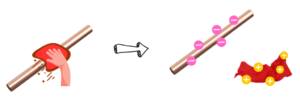
- Opposite charges attract, so the charged objects may stick together or create a tiny spark when they get close to something with the opposite charge.
Key points:
Static electricity involves charges at rest (unlike current electricity where charges flow).
The charges can cause attraction or repulsion between objects.
It can lead to discharge (sparks or shocks) if the built-up charge finds a path to move.
What is Charging by Induction?
- Charging by induction is when an object gets charged without touching it.
When a charged object is brought near a neutral object, the charges inside the neutral object rearrange, with opposite charges moving closer and like charges moving away.
So that one side of the object becomes charged without making any direct contact.
Example:
- When a negatively charged balloon is brought near the wall, the electrons in the wall move away because like charges repel.
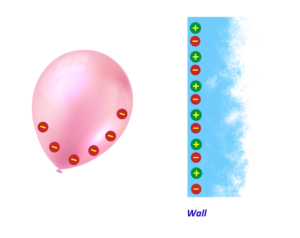
- This leaves the surface of the wall positively charged, which attracts the negatively charged balloon and makes it stick to the wall.
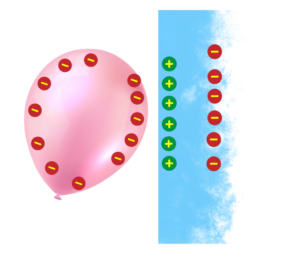
What are Electric Fields?
- An electric field is an invisible area around a charged object
- where it can exert a force on other charges. It shows how a charged object can attract or repel other charged objects without touching them.
- The strength of the electric field is stronger closer to the charged object and gets weaker as you move away.
Representation of Electric field lines:
- The lines point away from positive charges and toward negative charges.
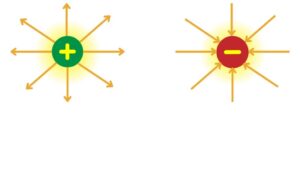
- The closer the lines, the stronger the field.
- The direction of the lines shows the direction a positive charge would move in the field.
- Like charges repel each other in an electric field, pushing away from each other.
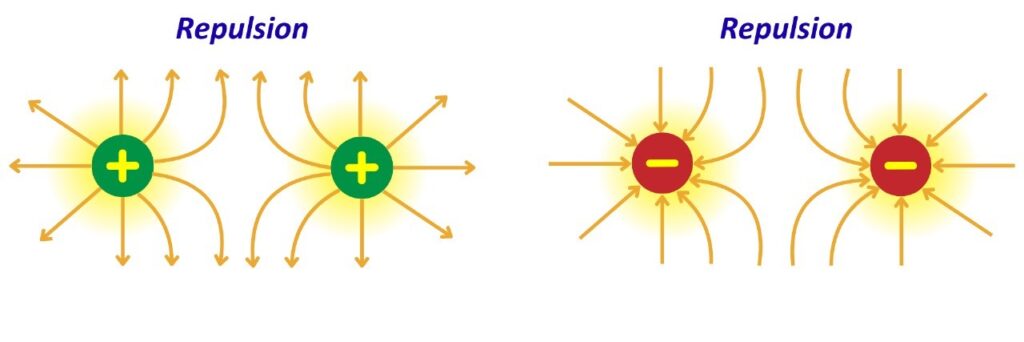
Why Do Sparks, Shocks, and Lightning Occur?
- Sparks, shocks, and lightning happen when a large amount of static charge suddenly moves to balance out charges.
- When a charged object has a high potential difference compared to its surroundings, the electric field becomes strong enough to make electrons jump through the air, which is normally an insulator.
Sparks
- Sparks happen when charges jump through the air, like when you see a small spark while touching a metal door handle.
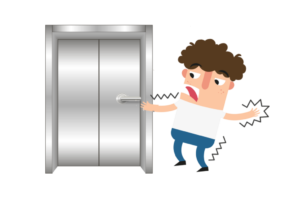
Shocks
- Shocks are what we feel when the charge moves through our body to the ground.
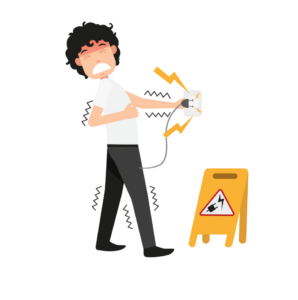
- A huge discharge of static electricity from clouds to the ground balancing the charge difference.

Dangers and Uses of Static Electricity
Dangers
Sparks can cause fires or explosions near petrol or gas.
Can give small electric shocks.
Can damage electronics if charges jump suddenly.
Uses:
Photocopiers and printers use static electricity to stick ink to paper.
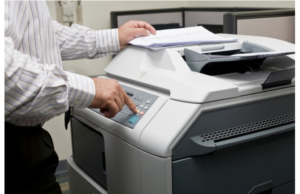
- Air purifiers use static to catch dust.
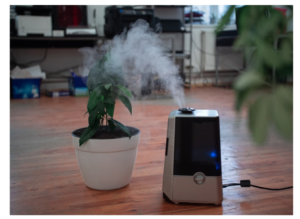
- Used in defibrillators to restart the heart.

Frequently Asked Questions
Solution:
- Static electricity is when electric charges build up on the surface of an object and stay there until they move away.
Solution:
Objects get charged when they are rubbed together, transferring electrons from one to the other.
Solution:
- It is when a charged object causes charges in another object to rearrange without touching it, making one side charged.
Solution:
- An electric field is the area around a charged object where it can push or pull other charges.
Solution:
- Because the electric field pushes like charges apart and pulls opposite charges together.
Solution:
- They happen when built-up static charge suddenly moves through the air to balance charges, causing a spark or shock.
Solution:
- Useful in photocopiers, spray painting, and air purifiers. Dangerous because it can cause shocks, fires, or damage electronics.

